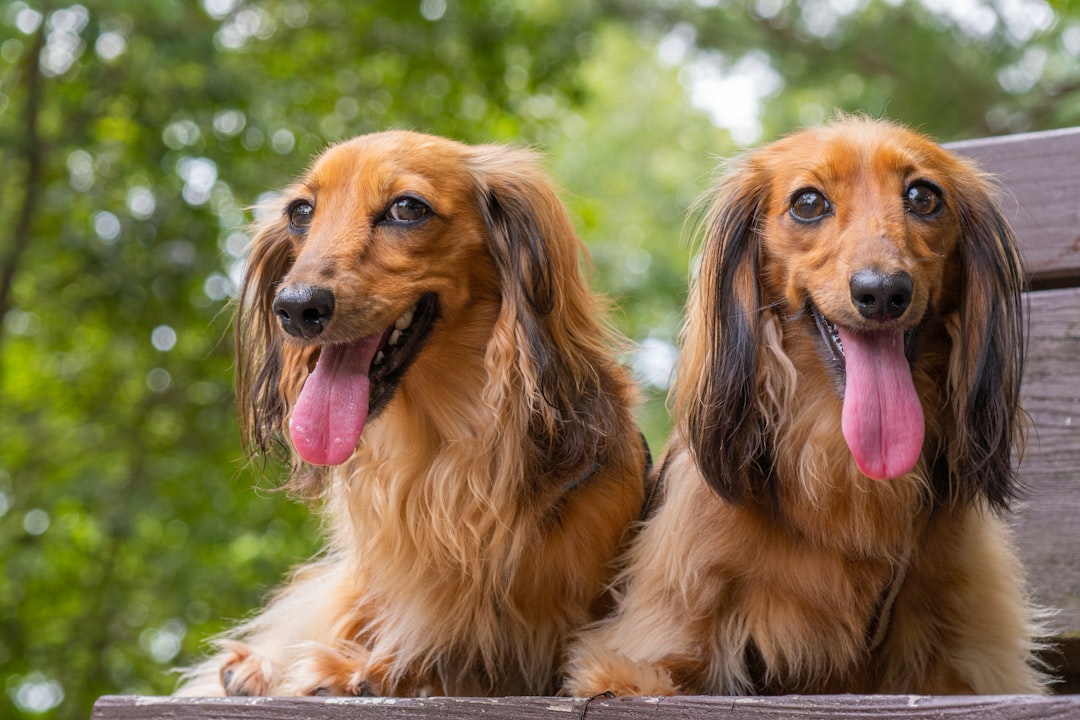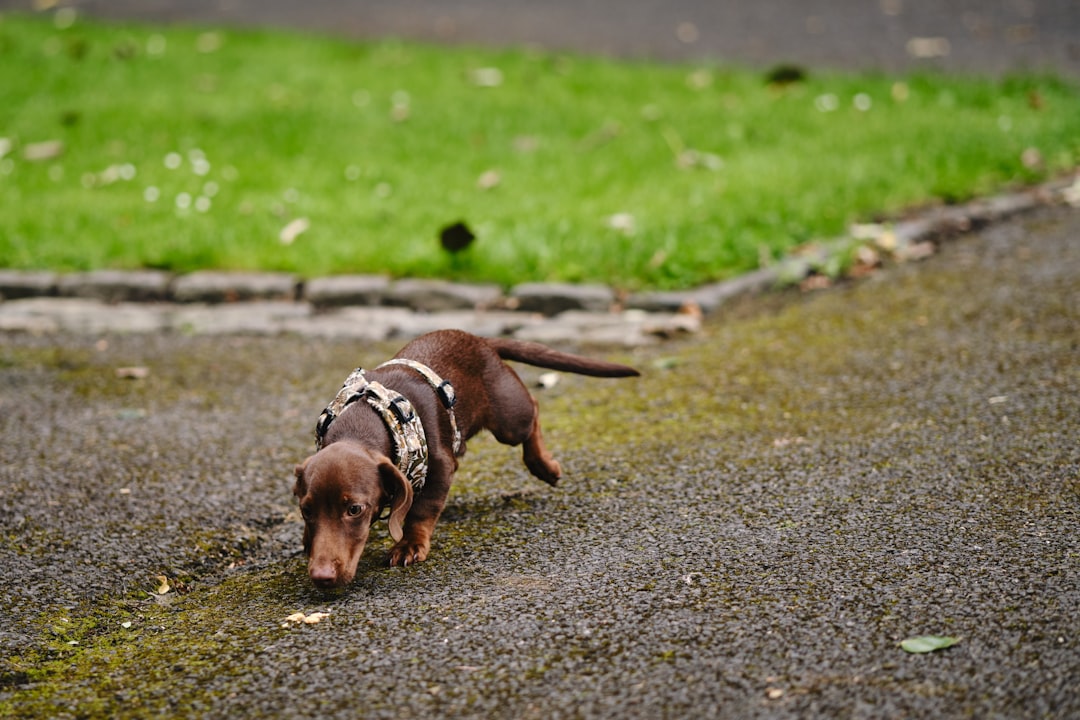If you think a Doberman is just a furry bodyguard with a penchant for intimidating squirrels, think again! This noble breed combines brainpower and brawn in a delightful package that could probably outsmart your average dog trainer. With a history as rich as a triple-fudge brownie and more personality quirks than a sitcom character, understanding the Doberman reveals a loyal companion that’s equal parts strength and smarts. So grab your treats and prepare to dive into the fascinating world of Dobermans, where every tail wag tells a story!
History of the Doberman Breed

Ah, the Doberman—a breed that strikes fear into the hearts of intruders and makes squirrels rethink their life choices! But how did this majestic creature come to be? Buckle up; it’s time for a history lesson, peppered with a twist of humor!
- Origin: Meet Karl Friedrich Louis Dobermann, a tax collector (yes, really!). Back in the late 19th century, he thought, “Hey, I need a furry bodyguard!” so he created the Doberman by mixing various breeds, including the Rottweiler and the Greyhound. Talk about a power combo!
- Purpose: Originally bred for protection, these pups were the ultimate sidekicks! Their brains outshine their brawn, making them loyal companions with sharp wits—because you wouldn’t want a dull dog to guard your treasures.
- Recognition: By the early 1900s, Dobermans strutted their stuff in dog shows, gaining popularity faster than your aunt at bingo night.
So, whether you see them as fierce guardians or cuddly companions, Dobermans have a rich history that makes them both intelligent and strong! Invest in a training manual, and you might just have the next canine superhero on your hands.
Physical Characteristics and Appearance

Ah, the Doberman – a breed that oozes charisma and confidence! With their sleek physique and muscular build, Dobermans are like the supermodels of the dog world. Here’s what makes them stand out:
- Height: Typically ranges from 24 to 28 inches. Yes, they might give your coffee table a complex!
- Weight: Usually between 60 to 100 pounds. Think of them as the “weight-lifters” of the canine realm.
- Coat: Their short and shiny coat comes in three fabulous colors: black, red, and blue. Talk about being runway ready!
Doberman vs. Other Breeds
| Feature | Doberman | Golden Retriever | Chihuahua |
|---|---|---|---|
| Height | 24 – 28 inches | 21 – 24 inches | 6 – 9 inches |
| Weight | 60 – 100 pounds | 55 – 75 pounds | 2 – 6 pounds |
| Coat | Short, sleek | Medium, wavy | Short, smooth |
In summary, when it comes to appearance, the Doberman doesn’t just turn heads; they stop traffic! Their striking looks matched with their intelligence make them a breed that’s hard to resist. Who wouldn’t want a four-legged fashion icon at home?
Temperament and Behavior Traits

When you think of a Doberman, picture a majestic canine, ready to leap into action and save the day—or at least keep the mailman at bay! Dobermans are not just looks; they have a personality to match! Let’s dive into their charming quirks:
- Intelligent: These pups wear their brain on their fur. Seriously, they process commands faster than I process my lunch decisions!
- Loyal: If you treat your Doberman well, you’ll have a lifelong sidekick. Just don’t expect them to share your snacks; they have their priorities.
- Protective: Like a furry knight in shining armor, a Doberman sees your family as their castle. Intruders? Not on their watch!
Quick Comparison: Doberman Temperament Traits
| Trait | Description | Fun Fact |
|---|---|---|
| Intelligence | Super smart pooch | Can learn any trick (even the secret cookie stash location)! |
| Loyalty | Bonded like glue | They think they are your bodyguard—watch out, world! |
| Playfulness | Loves to play fetch | Excellent at pretending they didn’t just eat your homework! |
So, if you’re looking for a loyal sidekick with a dash of mischief, the Doberman is the breed that brings both brains and brawn to the table!
Training and Socialization Needs
Ah, training a Doberman! It’s like teaching a toddler to walk—both challenging and hilariously rewarding. Dobermans are smart cookies, so they love to learn (and show off their skills). Here’s how to ensure your high-intelligence furball thrives:
Tips for Training Your Doberman:
- Start Early: Puppyhood is the prime time! Begin training at 8 weeks. Why? Because those little paws are packed with potential!
- Positive Reinforcement: Treats, praise, and cuddles work wonders. Remember, rewarding good behavior is way more effective than a stern look.
- Socialization: Expose your Doberman to various people, pets, and environments. The more, the merrier! It’s like being the social butterfly of the dog park.
- Consistency: Stick to commands and routines. Dogs, like humans, love familiarity. (Well, except when it comes to family dinners—just kidding!)
Helpful Training Tools:
| Tool | Purpose |
|---|---|
| Treats | Motivation and reward |
| Clicker | Timing your praise perfectly |
| Training Leash | Control during walks |
| Dog Training Classes | Professional guidance and fun interaction |
Training a Doberman can be an adventure—let the laughter (and learning) begin! 🐾
Exercise Requirements and Activities
Oh, the magnificent Doberman! This breed runs on energy like an espresso-fueled toddler. If you’re thinking about adopting a Doberman, brace yourself; they need plenty of exercise. Here’s a playful rundown of their fitness requirements and activities:
- Daily Walks: At least 1 to 2 hours of walkies. Yes, that’s a lot of ‘sniff and stroll’ time!
- Playtime: Frisbee? Check! Tug-of-war? Double check! A Doberman loves to show off its athletic prowess.
- Agility Training: Turn your backyard into a mini-obstacle course. Watch them leap over hurdles like they’re in the Olympics!
- Social Activities: Mixing with other dogs ensures your Doberman stays well-rounded—and keeps their barking at bay.
| Activity Type | Recommended Duration | Fun Factor |
|---|---|---|
| Daily Walks | 1-2 hours | High |
| Play Sessions | 30-60 minutes | Off the charts! |
| Agility Training | 1 hour | Very High |
In short, a tired Doberman equals a happy owner! Just think of your Doberman as your personal furry fitness coach—you’ll both benefit!
Health Issues Common in Dobermans
As majestic as they are, Dobermans aren’t just muscle and brains; they’ve got a few quirks in the health department. Think of it as the “Mamma Mia!” of dog genetics—some melodious highs and a few dramatic lows. Here’s a quick rundown of health issues that might cross paths with your dashing Doberman:
- Dilated Cardiomyopathy: This sounds fancy, but it’s all about the heart—some Dobermans can have a flair for cardiac drama.
- Hip Dysplasia: Like when you miss that last step on the stairs, but for dogs—this can affect how smoothly your Doberman struts across the floor.
- Von Willebrand Disease: That’s right, despite the fanciful name, it’s a bleeding disorder that might make you worried about their next dance-off.
- Hypothyroidism: If your Doberman seems a bit lazy, don’t just blame the couch—check in with their thyroid!
So, give your Doberman some extra love, care, and regular vet visits. After all, even the strongest breeds deserve a little pampering!
The Doberman’s Role as a Working Dog
Ah, the mighty Doberman! Not just a pretty face, it’s a four-legged Swiss Army knife, ready to tackle any job you throw its way. Known for their strength and brains, Dobermans take their roles as working dogs quite seriously—almost as seriously as they take napping on your favorite couch!
Here are some roles that this remarkable breed can fill:
- Guard Dog: Dobermans can smell fear (and pizza). With their alertness and loyalty, they make fantastic protectors of your home and family.
- Police Dog: These pups don’t just bark for show! With their keen instincts and trainability, many Dobermans proudly serve in law enforcement.
- Search and Rescue: Need a lost sock behind the couch? Just kidding! Dobermans can search for missing persons with impressive precision.
- Therapy Dog: Yes, they have a soft side too! With the right training, a Doberman can offer companionship and comfort to those in need.
So, if you’re considering a Doberman, remember, they aren’t just dogs; they’re furry superheroes! With the right training and socialization, your Doberman can be the ultimate partner in any adventure—unless it involves bath time, of course! 🛁
Choosing the Right Doberman for Your Lifestyle
Alright, aspiring Doberman parents, it’s time to roll up your sleeves and get serious about picking your perfect pup! Not every Doberman fits into every household condition, kind of like that annoying uncle at family gatherings. Let’s break it down for you:
- Energy Level:
- Couch Potato: If you prefer Netflix marathons, maybe consider a potted plant instead.
- Active Adventurer: The Doberman loves to move! Get ready for runs, hikes, and maybe a few dance battles in the living room.
- Space:
- Apartment Dweller: A smaller Doberman may fit in, but they’ll need lots of outdoor fun to avoid couch rage.
- House with a Yard: Ample space? Your Doberman will adore bounding about like a gazelle!
- Time Commitment:
- Free Time Champion: Dobermans eagerly crave attention and mental stimulation, so keep that calendar clear!
- Busy Bee: If you work long hours, consider hiring a Doberman playdate planner. Seriously—these pups need a social life!
In summary, ensure your lifestyle matches the gusto of the Doberman. That way, you both live happily ever after, with plenty of adventures and snuggles! 🐾
Frequently Asked Questions
What makes Dobermans so intelligent?
Ah, the brains behind the brawn! Dobermans are like the Einstein of dog breeds, blending athleticism with brainpower. They have a knack for learning tricks that would make other breeds say, ‘You want me to do what?’ Their incredible intelligence comes from a rich heritage of being used as working dogs, which means they were bred to think on their paws, follow commands with understanding, and even calculate the quickest route to treat city! Get ready to be amazed at their problem-solving skills!
Are Dobermans really good guard dogs?
Oh, absolutely! If you need a furry bouncer at your house party, look no further! Dobermans are like the superheroes of the dog world, always ready to protect their loved ones. With their keen senses and loyalty that rivals that of a best friend, they take their guarding job seriously. So serious, in fact, they might give the mailman a mini heart attack just for delivering a letter. Just remind them that not all strangers are bad – unless it’s a squirrel, then all bets are off!
How much exercise do Dobermans need?
Imagine a supercharged athletic machine craving a workout – that’s your Doberman! These pups are like the Usain Bolt of dogs, needing at least 1-2 hours of vigorous exercise every day to keep them happy and entertained. They love running, fetching, and anything that gets their heart pumping! If they don’t get enough activity, you might find them inventing their own ‘exercise’—like digging up the garden or chasing their tail with the intensity of an Olympic sport. So, lace up those sneakers and get ready for some serious doggy cardio!
Do Dobermans get along with kids?
You bet your squeaky toy they do! When socialized properly, Dobermans can be the ultimate playmates for your kids. They’re known to be surprisingly gentle giants (well, not giants, but you get the drift) and protective of their tiny humans. Imagine them as the loyal bodyguards at a royal playdate, ensuring the swing set is safe and the snacks are secure. Just like with any dog, supervision is key, but with a Doberman, you might just witness a beautiful friendship blossoming faster than you can say ‘Do you want to play fetch?’.



